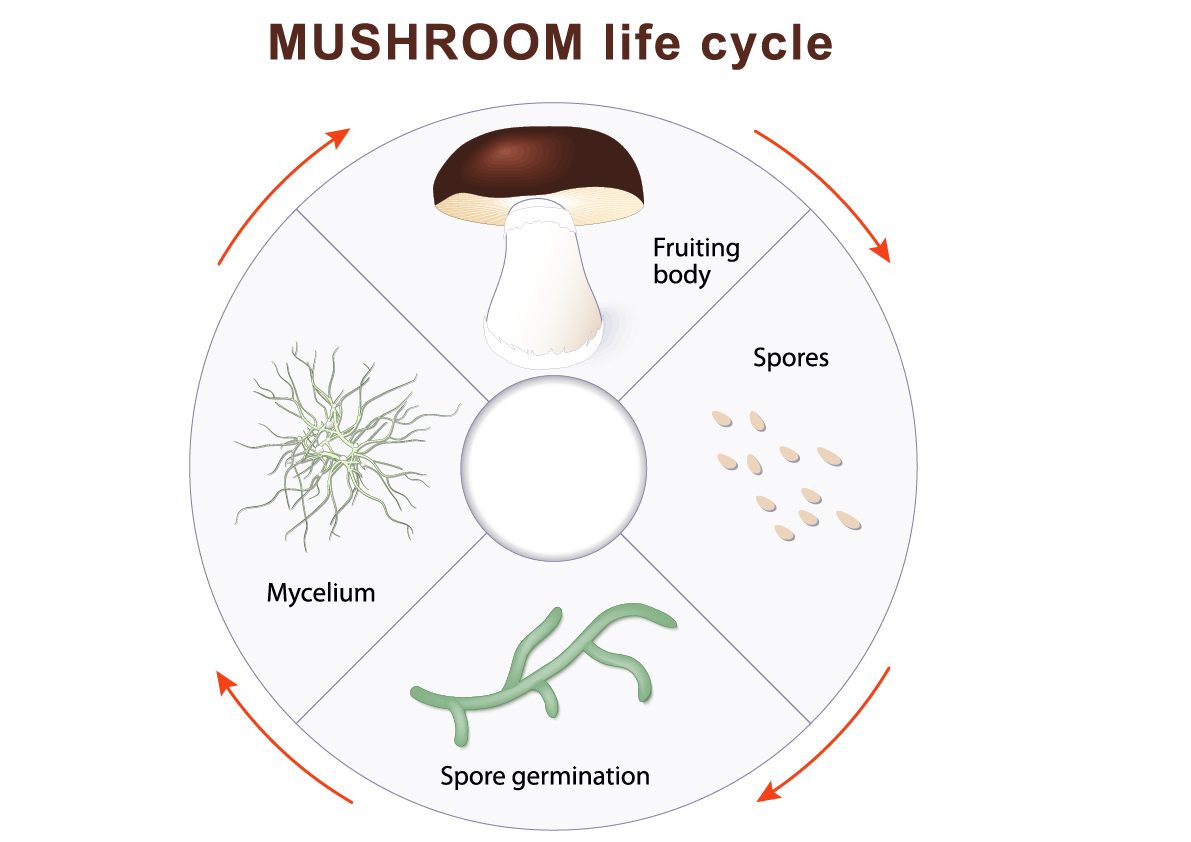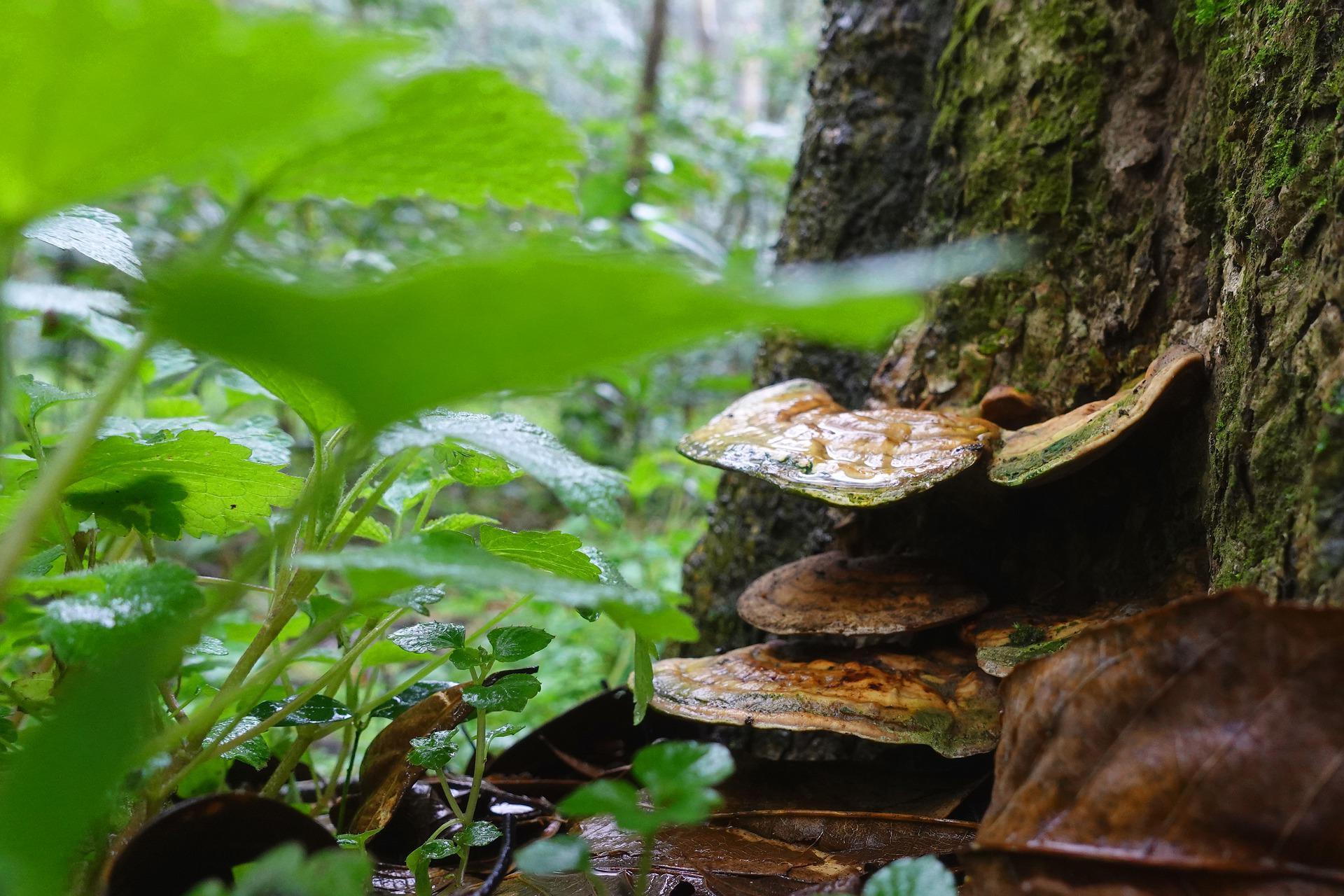WHAT YOU SEE IS WHAT YOU GET (Part 1)
Fruiting body vs. Mycelium
We certainly live in interesting times… this is especially true for us mushroom lovers. While humans have been using mushrooms for thousands of years, associating them with everything from fairies to gods to immortality to health supporting allies, we are fortunate today to be experiencing a renaissance of sorts for mushrooms. Modern science and traditional wisdom have been coming together over the last several decades to explore an amazing and diverse array of applications for a number of mushrooms.
 One of the oldest mushroom “discoveries” here in the West comes from Otzi the Iceman, a frozen mummy found in the Ötztal Alps on the border between Italy and Austria. Otzi is estimated to have lived over 5,000 years ago and was found carrying among his belongings two types of mushrooms, one known as tinder fungus, used to light fires, the other a birch polypore, that experts think was used to combat parasites. On the other side of the planet, throughout Asia, several mushrooms were utilized (and continue to be used today) considering them to be “superior medicine”, remedies of the highest quality and value.* Other regions of the world also utilized mushrooms as foods, folk remedies, and even ceremonially, including Eastern Europe and the Americas.
One of the oldest mushroom “discoveries” here in the West comes from Otzi the Iceman, a frozen mummy found in the Ötztal Alps on the border between Italy and Austria. Otzi is estimated to have lived over 5,000 years ago and was found carrying among his belongings two types of mushrooms, one known as tinder fungus, used to light fires, the other a birch polypore, that experts think was used to combat parasites. On the other side of the planet, throughout Asia, several mushrooms were utilized (and continue to be used today) considering them to be “superior medicine”, remedies of the highest quality and value.* Other regions of the world also utilized mushrooms as foods, folk remedies, and even ceremonially, including Eastern Europe and the Americas.
Today we are witnessing all this knowledge and hands on experience of history flowing together with modern science and research. Over the last 50 years researchers, initially mostly in Asia, but more and more of late all over the globe, have been exploring possible applications of fungi. Researchers have begun to explore how fungi may support our health* as well as a source of pharmaceuticals. Another promising area of recent research has looked into how fungi may help to clean up our environment. Some creative souls have even found that fungi can make an environmentally friendly building material for everything from clothes, as a leather alternative, furniture, and as a housing material. This all goes to the point that we are living in exciting and knowledge-expanding times for our use of fungi.
Mushrooms as Health Allies
Now you may be wondering about the title of this blog post, “What You See Is What You Get”, it may seem like an odd title for an article on mushrooms, but when it comes to discussing mushroom fruiting body and mycelium it is actually quite apropos. And in this current mushroom renaissance, one area that has seen a significant increase in interest here in the West is the use of mushrooms in a supplement form to support health and vitality.* And this leads to the ever-important question, “what is the best way to utilize these promising health allies?”, a question ever so important when it comes to mushrooms. Case in point, an independent study was performed just a few years ago where the researchers purchased 19 different Reishi products sold today and analyzed their content. Regretfully, what they uncovered was that only 5 of the 19 actually contained Reishi mushroom. (Note, Mushroom Wisdom’s Super Reishi was one of the 5 that tested positive for Reishi content). This is in part why this is a very important issue to address.
One key aspect of this conversation revolves around what part of the fungus is best to utilize when it comes to producing an effective and helpful mushroom supplement. You may notice that I used the word “fungus” when bringing up what part is best to use and that is because not all of the fungus is actually mushroom. This warrants some explaining so to do that we need to start off with a brief look at some definitions and the life cycle of fungi.
What Is a Mushroom
 It may seem like the answer is obvious but just in case let’s define this. Thankfully the FDA has provided us with one (see insert). The technical definition of a mushroom is that it is an epigeous sporocarp that is visible to the naked eye. In easier to understand terms, it is the above ground (epigeous) part of the fungus that we also call the fruiting body. It is the reproductive part of the fungus (sporocarp – spore producing structure) and the shortest “lived” part as well, only popping up when the conditions are just right. The vast majority of the time and the vast majority of the size of a fungus’ is spent in the mycelial stage, a stage that may surprise you to know can run for hundreds and even thousands of years, depending upon the fungi. Mycelia are a grouped together network made up of even finer and tinier filaments that called hyphae. The primary role of the mycelium is to gather nourishment for the reproductive fruiting body to produce its spores, basically the microscopic seeds that a mushroom produces by the trillions in order to reproduce. (see diagram).
It may seem like the answer is obvious but just in case let’s define this. Thankfully the FDA has provided us with one (see insert). The technical definition of a mushroom is that it is an epigeous sporocarp that is visible to the naked eye. In easier to understand terms, it is the above ground (epigeous) part of the fungus that we also call the fruiting body. It is the reproductive part of the fungus (sporocarp – spore producing structure) and the shortest “lived” part as well, only popping up when the conditions are just right. The vast majority of the time and the vast majority of the size of a fungus’ is spent in the mycelial stage, a stage that may surprise you to know can run for hundreds and even thousands of years, depending upon the fungi. Mycelia are a grouped together network made up of even finer and tinier filaments that called hyphae. The primary role of the mycelium is to gather nourishment for the reproductive fruiting body to produce its spores, basically the microscopic seeds that a mushroom produces by the trillions in order to reproduce. (see diagram).

 The fruiting body, or mushroom, is actually made up of a mass of hyphae that come together to create this portion of the fungus. You can think of the mycelium as an apple tree, while the fruiting
The fruiting body, or mushroom, is actually made up of a mass of hyphae that come together to create this portion of the fungus. You can think of the mycelium as an apple tree, while the fruiting
body is the apple.
Easy to Be Confused
It’s easy to see why many may think that a fungus’ fruiting body and the mycelium are virtually the same since the mushroom fruiting body is actually formed by the hyphae that create the mycelium, but as it turns out, they are quite different. The constituent makeup is quite different, hence the health supporting actions can also vary significantly. Another key variable lies with how each are grown, the mushroom fruiting body and the fungal mycelium. This will take us to part 2 of this discussion where we will explore the specifics on how mushrooms are grown, what has been used in the research and traditionally, as well as other pluses and minuses associated with each part of the fungus.

